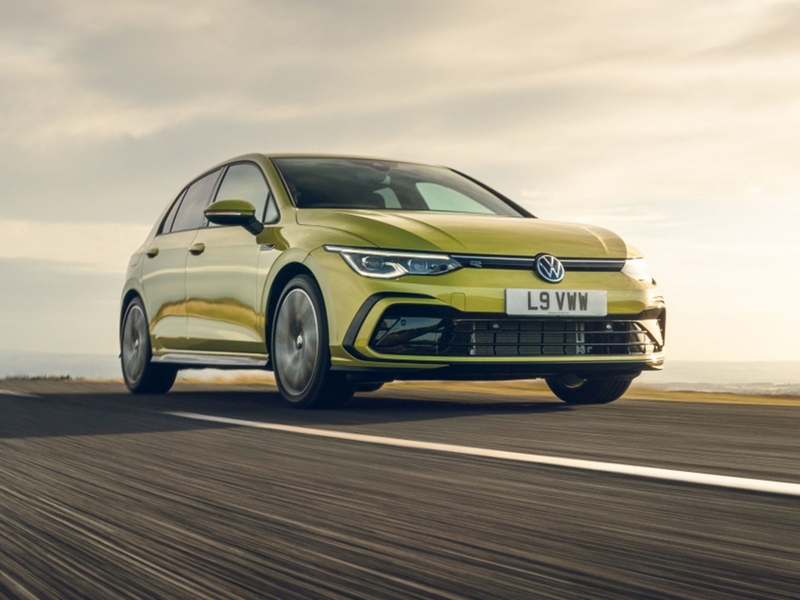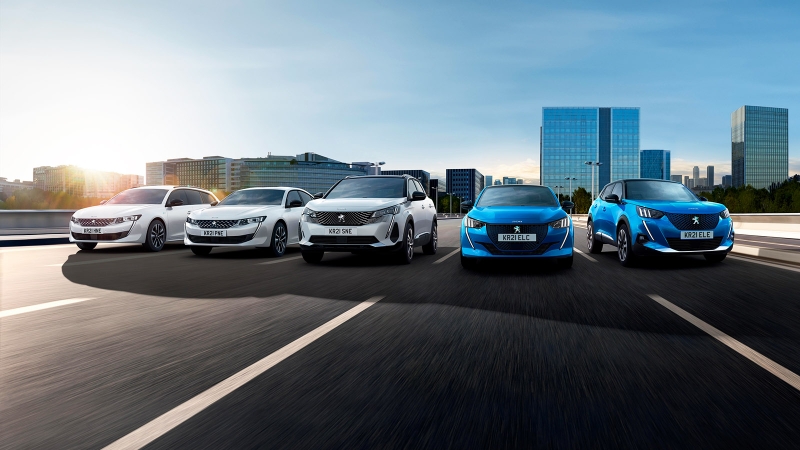













Peugeot 308 Review

The Peugeot 308 shows that there’s life in the family hatchback market just yet, with bold design and hybrid engines.
Every 308 gets an automatic gearbox and lots of clever tech, although the back seats aren’t quite as spacious as its longtime VW Golf rival.
- Impressive hybrid engines
- New infotainment system is easy to use
- Quality feel
- Limited rear-seat space
- Expensive battery-powered models
- Dashboard layout won’t suit everyone
Should I buy a Peugeot 308?
Peugeot is on a roll at the moment – its entire range of cars is good-looking and very talented. The 308 is certainly a looker, with slim headlights, gouging ‘fangs’ that include the daytime running lights on high-spec cars, a wide grille and voluptuous bodywork. In fact, the car is so stylish that Peugeot won’t even charge you for the gorgeous Olivine Green metallic paint you see in our images.
Most other aspects have been given the same level of thought and consideration as the styling. It’s not perfect, as you’ll read, but it’s a strong all-rounder with a lot to like. You can choose between the hatchback or the big-booted 308 SW estate, and both body styles are available with every type of power currently on the market – there are petrol, diesel, ‘self-charging’ hybrid, plug-in hybrid and full electric options. Not great if you’re indecisive, but the broad mix of options means there’s something for most buyers.
However, the Peugeot 308 doesn’t have it all its own way. It has to compete against the likes of the Ford Focus, Volkswagen Golf and Vauxhall Astra – which is very closely related to the 308 – as well as the bigger Skoda Octavia and the similarly stylish Mazda 3. You might also cross-shop the 308 against premium options like the Audi A3 or BMW 1 Series.
Interior and technology
At first glance, the 308 brings the usual Peugeot interior quirkiness, with the dials mounted high and the small, not quite round steering wheel sitting on your lap like a purring cat. It shouldn’t take much getting used to, although it’s worth making sure you can get the right driving position before you buy – you don’t want to get down the road and find the steering wheel completely obscuring the dials.
Provided you can get along with Peugeot’s ‘i-Cockpit’ setup, the 308 boasts a far more intuitive infotainment system than the last-shape 308 – and many other contemporary Peugeots. A 10-inch touchscreen comes as standard and it’s generally pretty easy to operate, but the really useful addition is a second touch panel that acts as a shortcut bar – and happily, it’s configurable so you can jump straight to Radio 4 when The Archers starts.
What’s more impressive is the sheer quality of the materials and construction. The interesting design is finished off with touches like cool metal on the lower centre console, tactile fabrics on the doors and seats, and squidgy leather for the steering wheel. The 308 clearly isn’t a direct rival for the Ford Focus anymore, it’s more in the Audi A3’s league.
Practicality
Rear-seat passengers might not be so enamoured with their portion of the interior. Yes, it gets most of the same nice trimmings, as well as USB sockets and air vents, but the rear-seat space isn’t up there with the class best. It feels like a similar amount of space as you get in the Mercedes A-Class and Toyota Corolla, but the Focus, Golf and A3 all offer more room for tall passengers or bulky child seats.
Boot space is more positive, with petrol and diesel 308s offering a 412-litre boot that’s at least 30 litres up on all those cars we just mentioned. Plug-in cars drop to 361 litres because of where the battery’s mounted – that’s still competitive with petrol rivals, and some 90 litres more than a VW Golf GTE plug-in hybrid. Remember the Peugeot 308 SW estate if you want the hatch’s qualities with up to 608 litres of space.
Engines and performance
We wonder if the Peugeot 308 is called that because there are 308 engine options… Ok, so there aren’t quite that many, but there’s an unusually wide range of powertrains so there should be something for most buyers.
The range kicks off with a normal 1.2-litre petrol engine, which is the cheapest way into 308 ownership. This offers respectable acceleration and up to 52mpg – even if mid-40s fuel economy is more realistic for real-world driving. Despite rapidly dropping diesel sales, Peugeot had a 1.5-litre BlueHDi diesel engine lying around so it’s offered in the 308. It’s only likely to appeal to the highest-mileage drivers, as its ability to nudge 60mpg is offset by the fact it’s the slowest-accelerating option.
Two plug-in hybrid options are available, with either 180hp or 225hp. That there are two options is puzzling, because they’re so well matched – both will officially do 35 miles of electric driving, return up to 242mpg and the 0-62mph times are just a tenth of a second apart. But, importantly, both are really well matched to the 308, offering sprightly acceleration and quiet electric-only running.
New to the range are the fully electric e-308 and a 136hp hybrid engine, with the latter returning up to 62mpg without the need to plug in. What’s common with every 308 is an automatic gearbox – there’s no manual option this time around.
Driving and comfort
It’s a shame that occasionally the automatic gearbox feels a bit slow-witted. However, this is probably the only complaint we have with how the 308 drives – it’s impressively comfortable and refined on the motorway, and it strikes a good balance between comfort and handling elsewhere.



































































